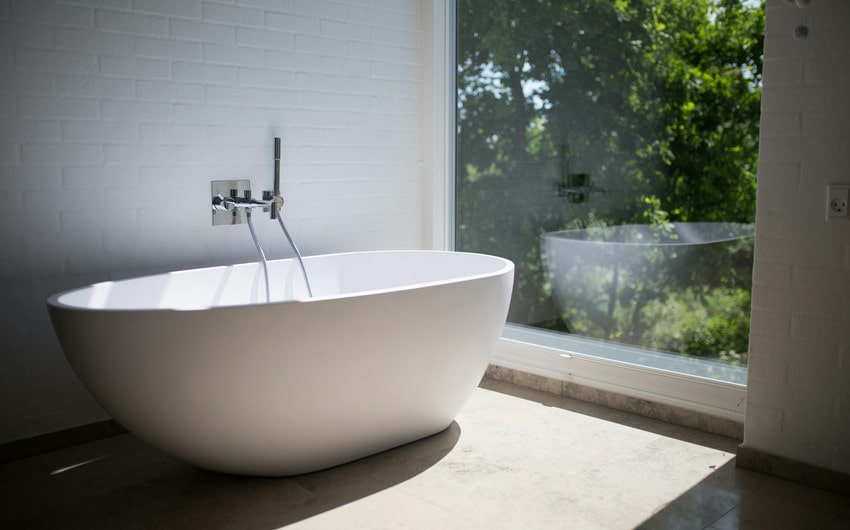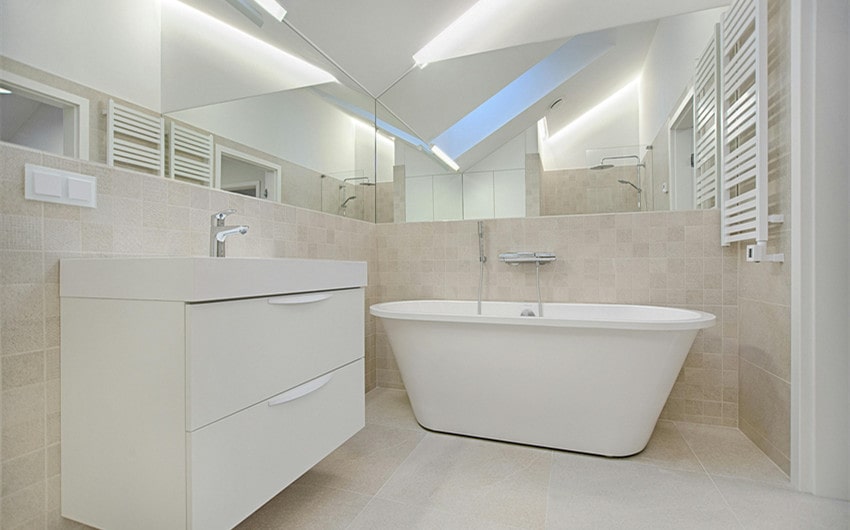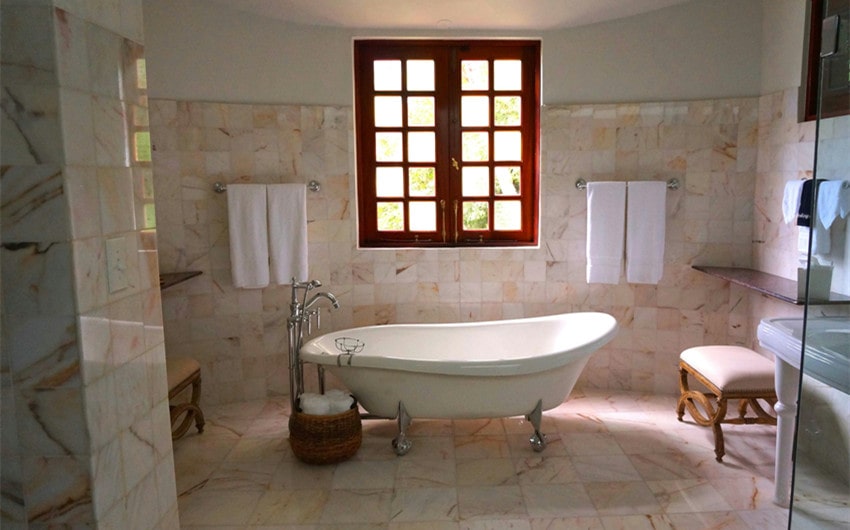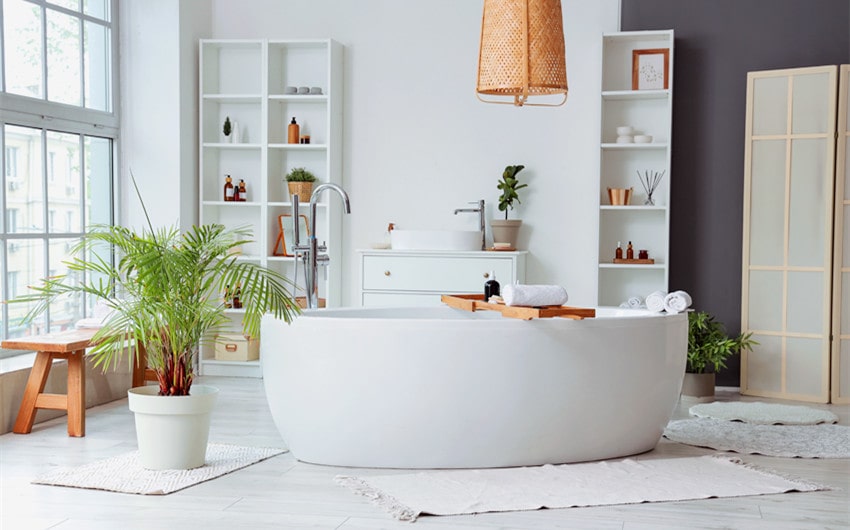Standard Bathtub Size: What You Need to Know Before Buying
When planning a bathroom upgrade or remodel, the size of your bathtub can make all the difference in comfort and space. Whether you’re soaking away a long day or simply fitting the tub into a smaller bathroom, understanding the standard bathtub size helps you make a smart choice. With a variety of bathtub types and sizes available, knowing what fits best can save you time and effort.
This guide will walk you through the essential details, so you can confidently choose the right tub for your bathroom space.
What Is the Standard Bathtub Size?

The standard bathtub size generally refers to the most common dimensions for residential bathtubs, which are designed to fit into typical bathrooms comfortably while allowing enough room for relaxation. In the U.S., the standard size for a bathtub is typically around 60 inches long, 30 inches wide, and 14 to 16 inches deep. This size is commonly found in most homes and offers enough space for an average adult to enjoy a comfortable soak.
However, it’s important to note that these dimensions can vary slightly depending on the type of bathtub you choose and the space available in your bathroom. For instance, alcove bathtubs, which are the most common, often adhere to the standard 60-inch length but may come in narrower or wider variations. Freestanding tubs or soaking tubs, on the other hand, tend to have greater depth and might come in larger or smaller dimensions, depending on the design.
In smaller bathrooms, shorter tubs are available in lengths as small as 48 inches, making them a great option for compact spaces. Larger bathtubs, often found in luxury bathrooms, can be up to 72 inches long, giving you extra room to stretch out.
While the standard size is a good fit for many homes, measuring your bathroom space and considering your needs, like how deep you want the water or the kind of installation, can help you choose the perfect bathtub for your situation. Understanding the standard bathtub size ensures that you select a tub that is both practical and comfortable.
Different Types of Bathtubs and Their Standard Sizes

Choosing the right bathtub involves more than just selecting a style—it’s important to understand the different types of bathtubs available and their standard sizes to ensure a proper fit for your bathroom. Let’s take a look at the most popular bathtub types and their standard dimensions.
| Type of Bathtub | Standard Length | Standard Width | Standard Depth |
| Alcove Bathtub | 60 inches | 30 inches | 14-16 inches |
| Freestanding Bathtub | 55-72 inches | 27-32 inches | 15-20 inches |
| Corner Bathtub | 60 inches (each side) | Varies | 18-22 inches |
| Drop-In Bathtub | 60-66 inches | 30-36 inches | 14-20 inches |
| Walk-In Bathtub | 52-60 inches | 28-32 inches | 30-38 inches |
| Whirlpool Bathtub | 60-72 inches | 32-36 inches | 18-24 inches |
| Soaking Bathtub | 60-72 inches | 30-36 inches | 18-22 inches |
1. Alcove Bathtub
Alcove bathtubs are the most common type found in homes, especially in standard bathrooms where space is limited. They are installed against three walls, with the front side open for easy access.
The standard size for an alcove tub is 60 inches long, 30 inches wide, and 14 to 16 inches deep, making it a practical choice for small to medium-sized bathrooms. Some variations may come in narrower widths, but the 60-inch length is typically consistent across models.
2. Freestanding Bathtub
Freestanding tubs are designed to stand alone and can be placed anywhere in the bathroom. They’re known for their stylish appearance and flexibility in placement.
These tubs come in a variety of sizes, but the standard dimensions for a freestanding tub range from 55 to 72 inches in length and 27 to 32 inches in width. The depth can vary but typically falls between 15 to 20 inches for a more luxurious soaking experience. Freestanding bathtubs often serve as a focal point in larger bathrooms due to their elegance and versatility.
3. Corner Bathtub
Corner bathtubs are designed to fit into a corner, making them ideal for maximizing bathroom space while still offering a spacious bathing area. The standard size for corner tubs typically measures around 60 inches on each side, with the depth often reaching 18 to 22 inches.
These tubs usually feature a triangular shape and are often wider than other types, providing enough room for two people to bathe comfortably. They’re perfect for those looking for a large soaking tub without taking up too much space.
4. Drop-In Bathtub
Drop-in bathtubs are installed into a pre-built deck or platform, with only the rim exposed. This design gives the bathroom a seamless and polished look. Standard sizes for drop-in tubs are typically around 60 to 66 inches long and 30 to 36 inches wide, offering a variety of sizes to fit different spaces. Drop-in tubs are popular for homeowners looking for a more customizable installation and design, especially in larger bathrooms.
5. Walk-In Bathtub
Walk-in bathtubs are designed with accessibility in mind, featuring a door that opens to allow easy entry. These are perfect for elderly individuals or people with mobility challenges. Standard walk-in bathtub sizes range from 52 to 60 inches in length and 28 to 32 inches in width, with a height often exceeding 38 inches to allow for deeper soaking.
While walk-in tubs tend to be shorter in length compared to other bathtubs, their added depth makes them ideal for users who want a comfortable and secure bathing experience.
6. Whirlpool Bathtub
Whirlpool bathtubs are designed to provide a spa-like experience by using jets that circulate water for a therapeutic massage. These tubs are larger than most standard tubs to accommodate the necessary equipment for the jets.
The standard size for a whirlpool bathtub ranges from 60 to 72 inches in length and 32 to 36 inches in width, with a depth of 18 to 24 inches. Whirlpool tubs are ideal for individuals looking to add a touch of luxury and relaxation to their bathing routine.
7. Soaking Bathtub
Soaking bathtubs are deeper than standard bathtubs, designed specifically for long, relaxing soaks. They don’t have jets like whirlpool tubs but are often deeper to allow the body to be fully submerged.
The standard size for soaking tubs ranges from 60 to 72 inches in length and 30 to 36 inches in width, with depths of 18 to 22 inches. These tubs are perfect for those who want to enjoy a calming and rejuvenating bath experience without the need for additional spa-like features.
Choosing the Right Bathtub Size for Your Space

Selecting the right bathtub size is a crucial part of bathroom design, as it impacts both functionality and comfort. A bathtub that’s too large can overwhelm a small bathroom, while one that’s too small might not offer the relaxation you desire. Here’s how to choose the right size for your space with key considerations broken down into sub-sections.
1. Assessing Your Bathroom Size
The first and most crucial step is to measure your bathroom space accurately. Take note of the length, width, and height of the area where the bathtub will be installed. It’s essential to account for any additional space needed for plumbing, fixtures, and potential shelving or storage around the tub.
Most standard bathtubs are around 60 inches long, but if you have a smaller bathroom, you might need to look at shorter tubs, or if space allows, you might opt for a larger, more luxurious model.
Measure not just the floor space, but also the available wall space. For alcove bathtubs, for instance, the walls will define the dimensions, while freestanding bathtubs allow more flexibility in placement. Be sure to consider other elements in your bathroom, such as the toilet, sink, and shower, to avoid crowding the space.
2. Consider Your Bathtub Type
Different types of bathtubs come in different standard sizes, and the type you choose will influence the size you need. For example, alcove tubs are ideal for smaller spaces and tend to come in standardized lengths, whereas freestanding tubs offer more flexibility in terms of size and placement.
If you have a spacious bathroom and want the bathtub to be the focal point, a freestanding or soaking tub might be the right choice. On the other hand, a corner bathtub can help save space while still offering a large bathing area.
3. Think About How the Bathtub Will Be Used
Who will be using the bathtub, and how often? If you’re selecting a bathtub for a family bathroom, you may need something durable and spacious enough for children. For adults who enjoy long, relaxing soaks, a deeper soaking tub or a freestanding model might be more suitable, even if it takes up more room. If you’re installing the bathtub in a guest bathroom or a bathroom used primarily for quick showers, a smaller alcove or drop-in tub may be more practical and space-efficient.
Consider also if anyone in your household has special needs. If accessibility is important, a walk-in bathtub might be the best choice, even if it takes up slightly more floor space.
4. Balance Comfort with Size
When choosing the right bathtub size, comfort should be at the forefront of your decision. Make sure the tub is long enough for you to stretch out, wide enough to feel comfortable, and deep enough for a good soak if that’s something you enjoy. The standard depth for most bathtubs is between 14 to 16 inches, but soaking tubs can be deeper, often 18 to 22 inches, allowing for a more luxurious bath.
For those who prefer a smaller tub due to space limitations, there are shorter models available that don’t compromise on comfort. Some tubs are designed to be smaller in length but offer more depth to compensate, making them ideal for those who want a compact but relaxing bathing experience.
5. Consider the Installation Process
Different bathtub sizes can also influence the installation process. For example, installing a drop-in bathtub or corner tub may require more extensive carpentry or plumbing work, which could affect the overall dimensions available for the tub itself. Freestanding tubs tend to be more flexible in terms of placement but might need additional space for floor-mounted plumbing fixtures.
If you’re working with a smaller bathroom, a simpler installation process, such as an alcove or a standard drop-in tub, might be more manageable and space-saving. Additionally, think about access points to your bathroom. Will the bathtub fit through your doors, or will walls need to be adjusted to bring it inside?
6. Prioritize Aesthetic and Design
Finally, choosing the right bathtub size is also about ensuring it fits within the overall aesthetic of your bathroom. A large, luxurious bathtub may look out of place in a small, minimalist bathroom, just as a tiny bathtub might feel too understated in a spacious, high-end bathroom. Make sure the bathtub size complements the style and theme of your bathroom, whether that’s modern, traditional, or something in between.
A freestanding tub can act as a stunning centerpiece in larger bathrooms, while an alcove tub or corner tub may blend more seamlessly in compact bathrooms where space is at a premium.







